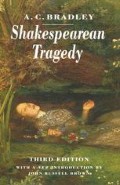Abstract
There is practically no doubt that Othello was the tragedy written next after Hamlet. Such external evidence as we possess points to this conclusion, and it is confirmed by similarities of style, diction and versification, and also by the fact that ideas and phrases of the earlier play are echoed in the later.1 There is, further (not to speak of one curious point, to be considered when we come to Iago), a certain resemblance in the subjects. The heroes of the two plays are doubtless extremely unlike, so unlike that each could have dealt without much difficulty with the situation which proved fatal to the other; but still each is a man exceptionally noble and trustful, and each endures the shock of a terrible disillusionment. This theme is treated by Shakespeare for the first time in Hamlet, for the second in Othello. It recurs with modifications in King Lear, and it probably formed the attraction which drew Shakespeare to refashion in part another writer’s tragedy of Timon. These four dramas may so far be grouped together in distinction from the remaining tragedies.
Preview
Unable to display preview. Download preview PDF.
Author information
Authors and Affiliations
Copyright information
© 1992 Macmillan Publishers Limited
About this chapter
Cite this chapter
Bradley, A.C. (1992). Othello. In: Shakespearean Tragedy. Palgrave, London. https://doi.org/10.1007/978-1-349-22059-5_5
Download citation
DOI: https://doi.org/10.1007/978-1-349-22059-5_5
Publisher Name: Palgrave, London
Print ISBN: 978-0-333-57536-9
Online ISBN: 978-1-349-22059-5
eBook Packages: Palgrave Literature & Performing Arts CollectionLiterature, Cultural and Media Studies (R0)

